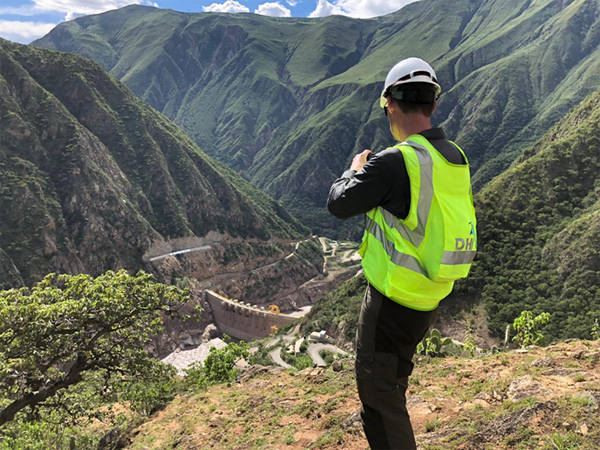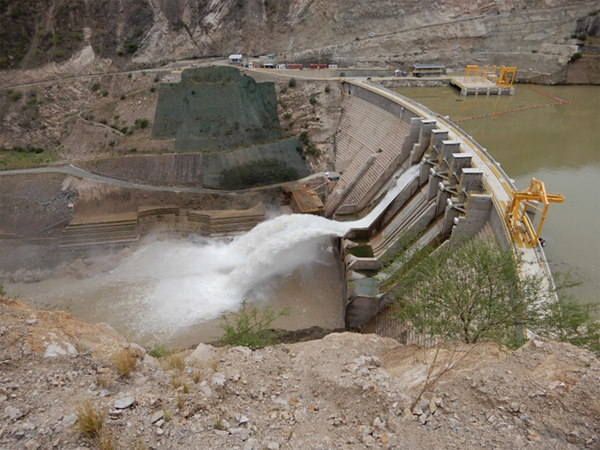
The Cerro del Aguìla dam. © DHI
The Cerro del Aguìla Hydro Power Plant and reservoir in Peru is exposed to sedimentation due to the sediment load from the Mantaro River. Without regular flushing of the deposited sediments through bottom sluice gates located at the dam, the reservoir will inevitably silt up in a few years.
Flushing is achieved by lowering the water table in the reservoir, which allows the necessary conditions for erosion of deposited sediments to occur. During the flushing period, the power turbines are switched off, resulting in loss of power production. The challenge is to keep the downtime period as short as possible while allowing sufficient time to flush the sediments effectively.
Developing an intelligent strategy for flushing operations
The hydro power plant operator, Kallpa Generacìon Ltd., asked DHI to carry out a modelling study to derive an optimal flushing operation strategy. By modelling the reservoir, specific issues such as the duration of the flushing period, the rate of lowering the water table, the required river discharge for initiating the flushing and the flushing frequency were inspected.
As a basis for the modelling, a comprehensive sediment measuring campaign was carried out, including bathymetrical surveys, sediment concentration and grain size analysis.
The model system used was the 2D model, MIKE21C. The model was set up using a morphological multi-fraction model and applied to simulate both reservoir filling of sediments and sediment flushing. Based on the model results, a flushing strategy was proposed and verified during the flushing campaign in March 2019. The proposed strategy resulted in a shorter flushing duration in comparison to previous durations, while at the same time demonstrating that high reservoir efficiency could be maintained.
‘A model study of sediment flushing in reservoirs can help hydro power owners minimise the down-time in energy production while at the same time achieve an effective management of sediments and ultimately save costs’, says Henrik Garsdal, Senior Hydraulic Specialist at DHI.

Spillway of the Cerro del Aguìla dam. © DHI
For further information, contact:
Henrik Garsdal
Senior Hydraulic Specialist, Denmark
heg@dhigroup.com
Robin Marc Dufour
Managing Director, Peru
rmd@dhigroup.com